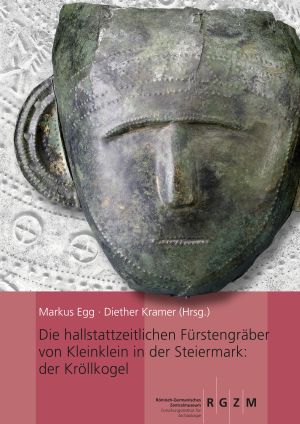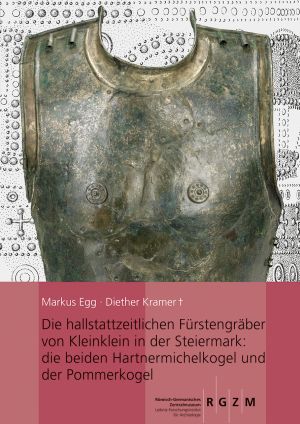Kramer, Diether
Die hallstattzeitlichen Fürstengräber von Kleinklein in der Steiermark: der Kröllkogel
The sites around the Burgstallkogel between Großklein and Gleinstätten in western Styria are among the most outstanding of the Early Iron Age in Austria and Central Europe. The centre is the hilltop settlement on the Burgstallkogel, at the foot of which lies the Sulmtal necropolis, with some 700 burial mounds still standing.
On the first river terrace of the Saggau valley, near Kleinklein, the four richest princely burials of the entire eastern Hallstatt district were found. Most of the finds were made in the 19th and early 20th centuries. A successful re-excavation in 1995 in the most recent princely tomb, the so-called Kröllkogel, provided the impetus for the present new treatment and re-evaluation of this magnificent tomb. To achieve this goal, the Joanneum Universal Museum in Graz and the RGZM joined forces and organised an interdisciplinary group of researchers to examine all aspects of the find.
Die hallstattzeitlichen Fürstengräber von Kleinklein in der Steiermark: die beiden Hartnermichelkogel und der Pommerkogel
After the new presentation of the Kröllkogel, the other three princely tombs of the Separatnekropole of Kleinklein were also to be reworked.
The graves show a clear chronological sequence: At the beginning is Hartnermichelkogel 1, where the founder of the Separatnekropole was buried in the last decades of the 8th century BC. The clearly younger Pommerkogel is likely to date between 660/650 and 630/620 BC. What is remarkable is that the grave furnishings are largely identical, which testifies to a fixed set of rules according to which the highest elite had to be buried in small graves over a period of 150 years. The construction of the separate necropolis thus suggests a clearly elevated position of this group of people as well as a pronounced dynastic consciousness.








